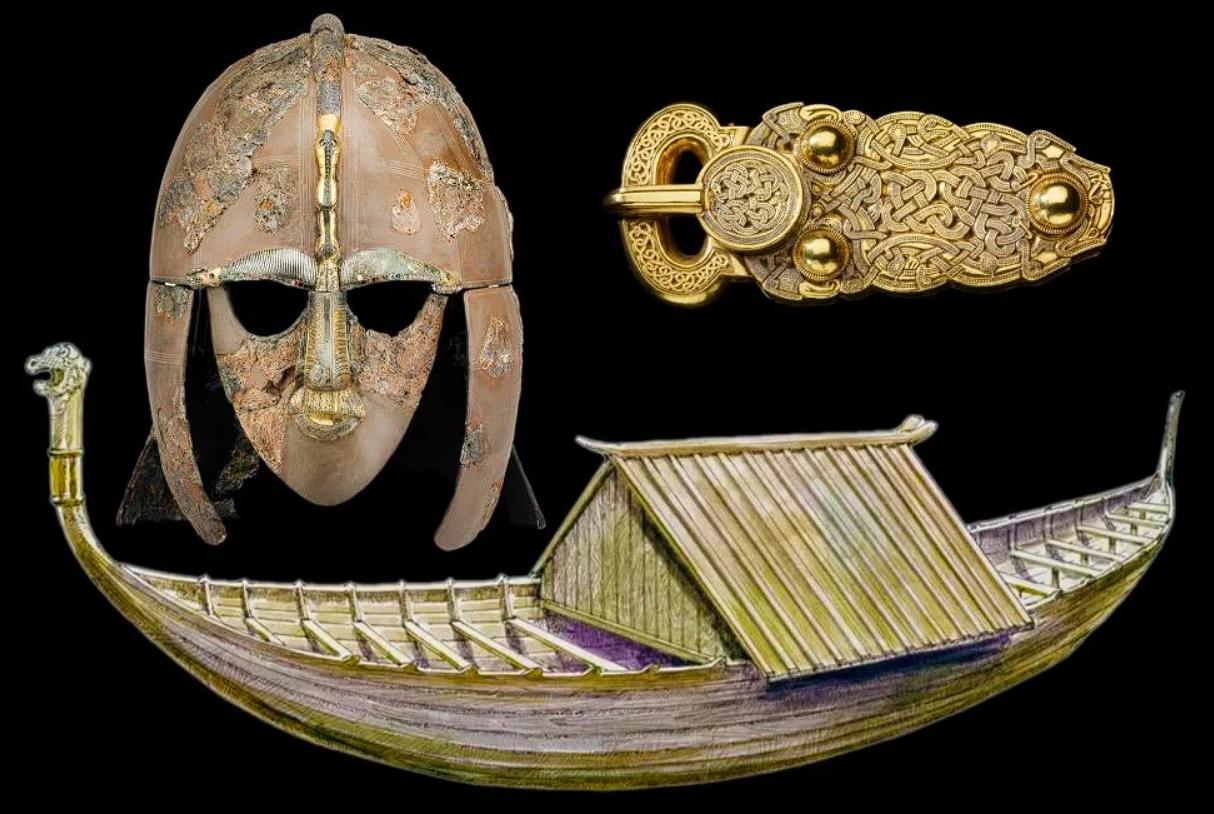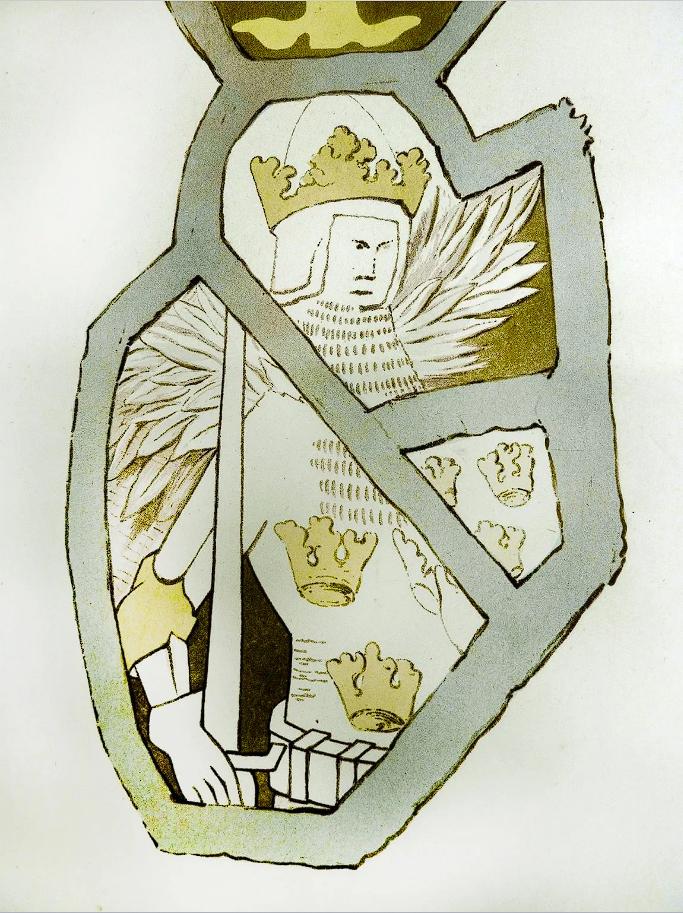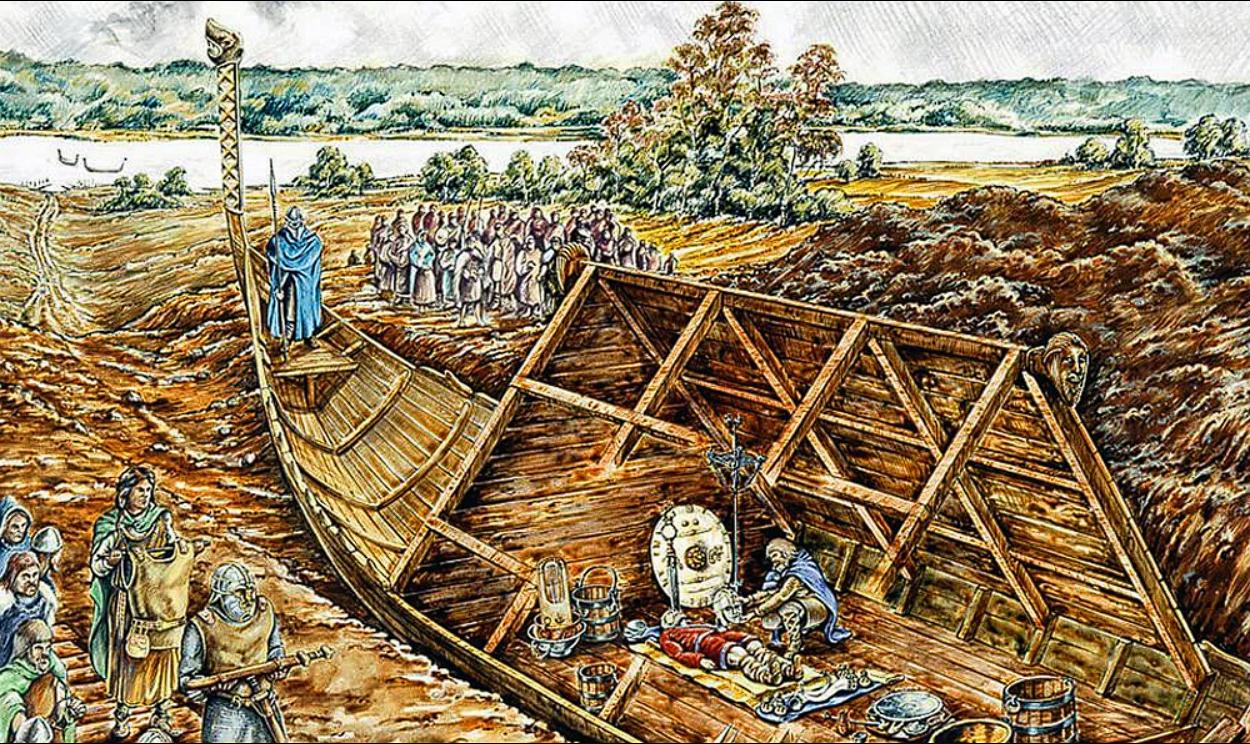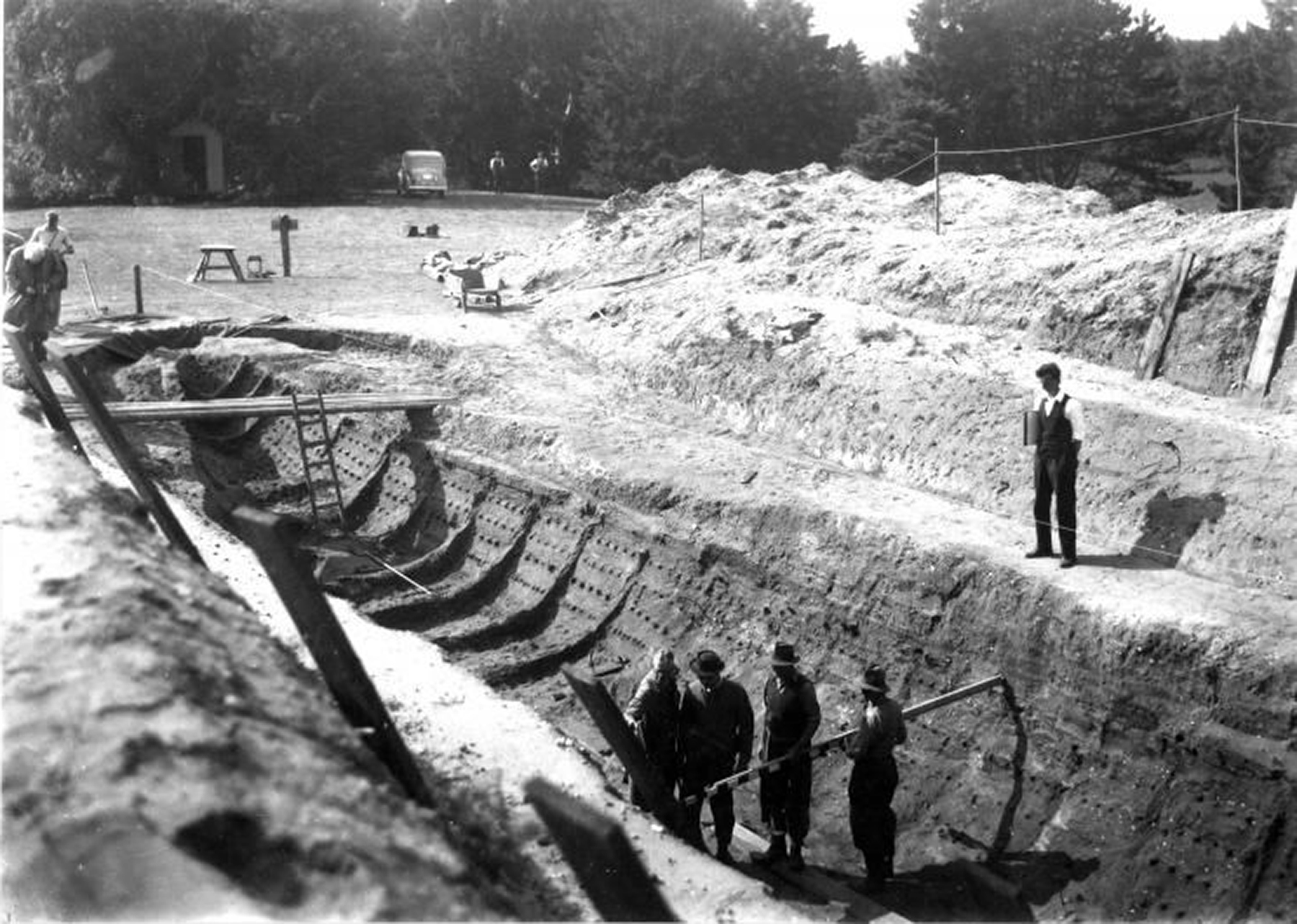The Discovery of a Lost Kingdom
A Hidden Secret Beneath Suffolk’s Hills
For centuries, the rolling hills of Suffolk, England, concealed one of the most extraordinary archaeological discoveries of the 20th century. In 1939, as the world stood on the brink of World War II, a local landowner, Edith Pretty, hired amateur archaeologist Basil Brown to investigate mysterious mounds on her estate. What he unearthed was beyond imagination—an Anglo-Saxon ship burial, filled with treasures fit for a king. But who was buried there, and what secrets did this discovery reveal about England’s past?
The Role of Basil Brown in the Excavation
Basil Brown, a self-taught archaeologist, carefully excavated the largest mound on the estate. Despite the looming threat of war, he persevered, gradually uncovering the outline of a 90-foot-long ship buried beneath the soil. Though the wooden structure had decayed over the centuries, its imprint remained, along with a wealth of gold, silver, and intricately crafted artifacts.
A Helmet Fit for a Warrior King
Among the most stunning discoveries was an ornate helmet, now one of the most famous Anglo-Saxon artifacts. The helmet, with its detailed engravings and faceplate, hinted at the high status of the individual buried there. Though no human remains were found, many scholars believe the grave belonged to King Rædwald, a 7th-century ruler of East Anglia and a powerful figure in Anglo-Saxon England.


The Significance of the Sutton Hoo Ship Burial
Challenging the Notion of the Dark Ages
Before the discovery of Sutton Hoo, the early medieval period in England was often referred to as the “Dark Ages,” a time believed to be devoid of cultural and artistic advancements. However, the treasures found at Sutton Hoo challenged this perception. The exquisite craftsmanship of the burial artifacts demonstrated a society engaged in sophisticated artistry, trade, and governance.
Connections to a Wider World
The artifacts found within the ship burial revealed far-reaching connections beyond Anglo-Saxon England. Gold coins from the Byzantine Empire, silverware of Scandinavian origin, and intricate metalwork showcased a society that traded extensively with distant lands. Sutton Hoo proved that early medieval England was not isolated but rather deeply intertwined with European and even Middle Eastern civilizations.
A Glimpse into Anglo-Saxon Royalty
The burial site provided invaluable insights into the power and status of Anglo-Saxon rulers. The presence of a massive ship, laden with weapons, jewelry, and ceremonial objects, indicated a warrior culture that valued honor, wealth, and maritime prowess. The grandeur of the burial suggests that Anglo-Saxon kings modeled their funerary practices on those of Norse and Scandinavian traditions, reinforcing England’s ties to Viking-era customs.

The Ongoing Mystery and Legacy of Sutton Hoo
What Other Treasures Remain Undiscovered?
While the Sutton Hoo excavation was groundbreaking, many questions remain unanswered. Could there be more undiscovered ship burials beneath the English landscape? The possibility of future finds continues to excite archaeologists, as each new discovery has the potential to reshape our understanding of early medieval Britain.
The Influence on Modern Archaeology
The meticulous excavation of Sutton Hoo set new standards for archaeological methodology. It highlighted the importance of preserving historical sites and inspired a renewed interest in Anglo-Saxon studies. The techniques used in the Sutton Hoo dig have since been applied to countless other sites, advancing the field of archaeology as a whole.
Sutton Hoo Today: A Window into the Past
Today, the treasures of Sutton Hoo are housed in the British Museum, where they continue to captivate visitors from around the world. The site itself has become a major heritage attraction, allowing the public to walk in the footsteps of history. The burial mounds remain a symbol of England’s rich past, a reminder of the warriors and rulers who once shaped the land.

Conclusion: What Lies Beneath?
The discovery of Sutton Hoo transformed our understanding of Anglo-Saxon England, revealing a world of wealth, power, and cultural exchange. But what other secrets remain buried beneath the earth? Could there be more ship burials waiting to tell their story? As archaeologists continue to dig, the past may yet have more to reveal.

CÁC TIN KHÁC
Mary Walton: The Forgotten Inventor Who Helped Clean Up America’s Cities
Tomb of Queen Nefertari in the Valley of the Queens, Egypt
Discover the Hypostyle Hall of the Temple of Hathor at Dendera
Venus de Losange: Unveiling the Mystery of a 20,000-Year-Old Paleolithic Icon